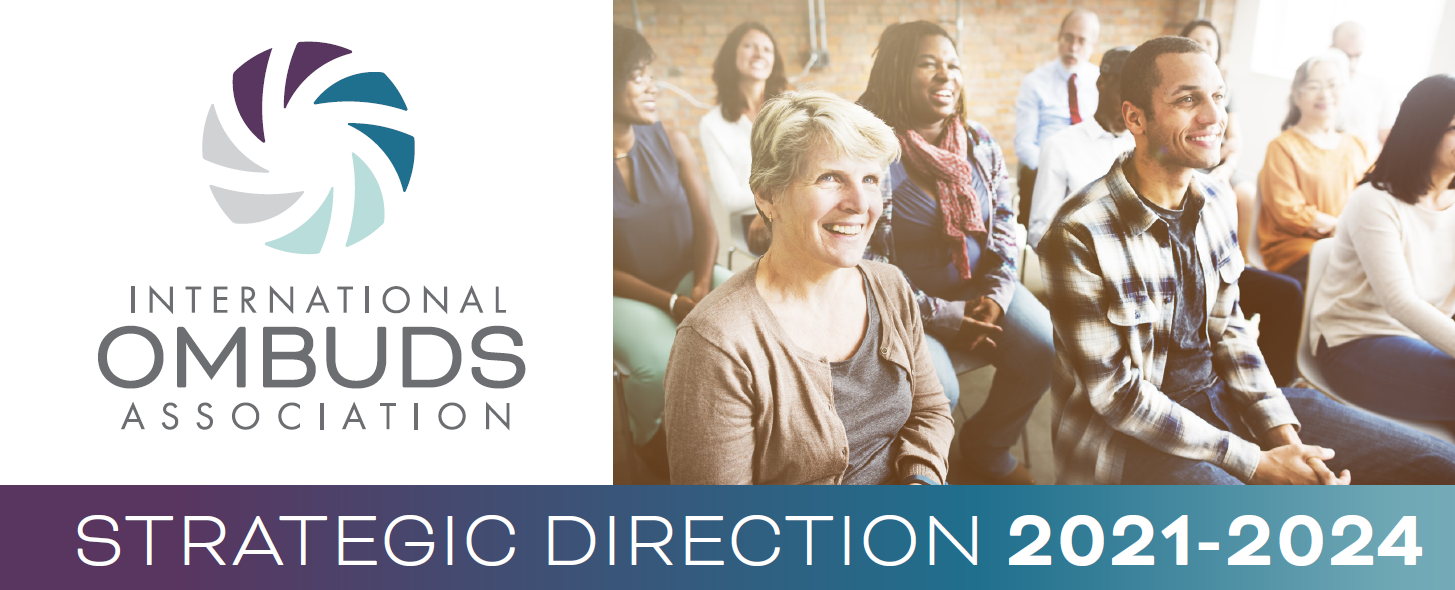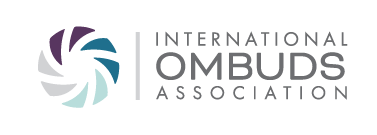|

GOAL 1:
Ombuds have the capacity and tools to position themselves as essential contributors and trusted advisors in their organizations.
Learn more>
GOAL 2:
Organizational leaders in key sectors understand and value the ombuds function and IOA.
Learn more>
GOAL 3:
IOA operates effectively and has the financial resources to achieve its goals.
Learn more>
GOAL 4:
IOA has a culture of diversity, equity, inclusion, and engagement.
Learn more>
IOA Strategic Direction 2021-2024
Looking to the Future
In 2020, IOA engaged in a planning process to focus our organization, define our challenges, and evolve for the future. The result is a strategic
direction that outlines our approach, goals, and strategies for 2021-2024. Learn more about the plan below and read the blog post announcement from 2020-2021 IOA President, Melanie Jagneaux, JD, MBA, CO-OP®, on The Independent Voice.
Overarching Strategic Approach
- Define the value of the organizational ombuds role* and of IOA.
Articulating the “value proposition” is a core initiative across all goal areas included in this plan.
- Focus on high-value activities that advance multiple goals.
We will find ways to support ombuds and promote the profession at the same time, and this efficiency will be critical during difficult economic conditions. For example, when IOA and individual members communicate the return on investment of ombuds positions and offices, that creates a positive impact for individual ombuds and the profession as a whole. High-value strategies include those that:
- Help members advocate for their roles
- Generate net revenue
- Broaden recognition of IOA and the organizational ombuds role
- Advance diversity, equity, Iinclusion, and belonging.
Integrating diversity, equity, inclusion, and belonging in IOA operations and programs is another core initiative. Strategies for advancing this initiative can be found in Goal 3 and throughout the strategic plan.
- Improve the organizational climate of IOA.
The most successful strategies will move IOA toward programmatic goals while improving member inclusiveness, engagement, sense of belonging, and the overall “organizational climate” among IOA leaders and members.
- Improve IOA communications with members.
Generally, it is important that IOA improve its communications with members to increase leadership transparency, inform members on matters relevant to them, and to provide opportunities for members to provide feedback and comment.
*IOA and all goals and strategies in this document are focused primarily on the organizational ombuds role.
Ombuds have the capacity and tools to position themselves as essential contributors and trusted advisors in their organizations.
OUTCOMES:
- Existing ombuds offices and positions are retained.
- New ombuds programs are established.
- Ombuds are widely perceived as helpful to people in organizations and their leaders.
- CO-OP® certification is valued as a way to increase the professional practice of ombuds.
- Program accreditation is seen as a marker for a successful program and results in an increasing number of programs operating in compliance with IOA Standards of Practice & Code of Ethics.
STRATEGIES:
- 1.1. Help ombuds make the case for the value of their offices by providing tools and training on how to communicate that value to leaders and potential inquirers.
- 1.2. Improve professional development/training programs to make them more readily available and to better reflect member needs at different career points and for different sectors and geographies.
- 1.3. Collaborate with the Board of Certification for CO-OP® to evaluate refocusing certification to solely certify organizational ombuds’ knowledge, skills, and experience, and remove program requirements from certification.
- 1.4. Develop a program for the accreditation of ombuds offices that are structured to comply with IOA Standards of Practice & Code of Ethics.
Back to Top
Organizational leaders in key sectors understand and value the ombuds function and IOA.
OUTCOMES:
- New ombuds programs are established.
- The number of IOA members grows annually.
- Organizational ombuds programs are common internationally and in large corporations, government agencies, universities, and in K-12 school systems
STRATEGIES:
- 2.1. Expand IOA advocacy and outreach efforts on behalf of ombuds to increase awareness of the value of organizational ombuds programs to people and organizations.
- 2.2. Create programming and tools to inform peer professions and organizational leaders in identified industries.
- 2.3. Provide assistance to potential new programs and programs under threat.
IOA operates effectively and has the financial resources to achieve its goals.
OUTCOMES:
- IOA Board of Directors, staff, committees, and task forces have charters or terms of reference and adhere to them.
- Board provides strategic direction and makes policy decisions. Staff and committees (and, in particular, the Executive Committee) are responsible for management and operational effectiveness.
- Committees have adequate membership, leadership training, and leadership succession plans.
- IOA has sufficient revenue to maintain adequate reserves and expand staff and member services.
STRATEGIES:
- 3.1. Restructure the IOA Board of Directors, committees, and staffing to separate governance and management functions.
- 3.2. Clearly define and adhere to the roles, responsibilities, and authority of each committee/position (volunteer and paid).
- 3.3. Establish committee workplans and reporting dashboards that align to strategic plan goals.
- 3.4. Ensure that budgeting and financial management practices support IOA, maintain adequate reserves, and fund new staff and initiatives approved by the Board of Directors.
IOA has a culture of diversity, equity, inclusion, and engagement.
OUTCOMES:
- Increased diversity in leadership and membership.
- Members and volunteers report high satisfaction (feel included, engaged, and a sense of belonging).
- Member retention increases.
STRATEGIES:
- 4.1. Engage the Board and membership in DEIB training and integrate DEIB principles into IOA.
- 4.2. Support and encourage the development of IOA member capacity to integrate diversity, equity, inclusion, and belonging (DEIB) into their practices and organizations.
- 4.3. Develop recruitment strategies that focus on increasing diversity on the Board of Directors and committees.
- 4.4. Identify ways to increase participation and engagement of international members across IOA programs and leadership.
- 4.5. Identify ways to increase participation and engagement of emerging ombuds across IOA programs and leadership.
- 4.6. Identify ways to increase members’ sense of belonging and meaningful connection with the organization, including those who are not practicing ombuds.
- 4.7. Develop a process for consideration of a possible name change for the organization.
|

